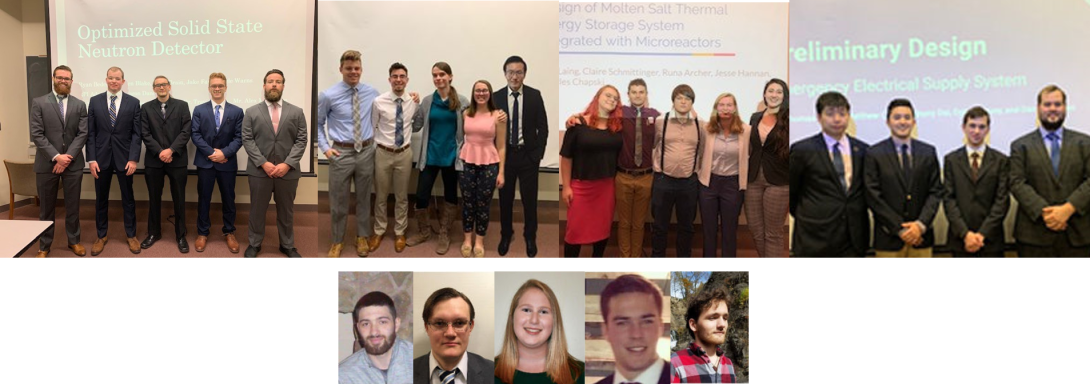Here is the class of 2020 and their Senior Design Projects

Here is the class of 2020 and their Senior Design Projects

This project focused on the design of a solid-state neutron detection system (SSND) for thermal neutrons to replace existing 3He based detector arrays, such as the Neutron Multiplicity Array Detector (NoMAD) used by the Advanced Nuclear Technology group at Los Alamos National Lab. NoMAD systems consist of two opposing units each containing 15 3He detectors in polyethylene moderator with a neutron source between them, as shown in Figure 1. For the purposes of this project and its definition of system efficiency, a single NoMAD unit was used for comparison purposes.
This project will act as a laboratory experiment for the LINAC lab course in the absence of the linear accelerator while it undergoes various upgrades. This experiment will teach the concepts of neutron moderation, specifically fast neutrons, as well as time of flight measurements and thermal neutron detection. The three main components of this laboratory experiment setup are a D-T fusion source which emits 14.1 MeV neutrons surrounded by a polyethylene sleeve, light water enclosed in a heated aluminum casing acting as the moderator, and a lithium glass detector.
This project explores the possibility of implementing a molten salt thermal energy storage system with a nuclear reactor in an existing grid. We started with the Advanced Fast Reactor 100 (AFR-100) design from Argonne National Labs as a reactor with which to pair our conceptual molten salt storage system. The AFR-100 was ideal based both on size and the use of supercritical carbon dioxide as a working fluid. The initial specified reactor concept allowed us to approach the different subsystems and decisions from a defined baseline.
The goal of this project is to explore alternatives to Emergency Diesel Generators (EDGs) through risk and cost assessments, and suggest a system that meets current NRC safety standards while decreasing the costs of the power system. Systems that were explored included gas turbine generators, Compressed Air Energy Storage (CAES), Pumped Storage Hydropower (PSH), and Flywheel Energy Storage (FES). Combined systems were also considered. AIMS-PSA was used in order to analyze the different power systems via probabilistic risk analysis while inserted into a model nuclear power plant.
There were several goals for the project. First, a literature survey of BWR containment designs and safety characteristics was performed. One of these designs, the Mark I is pictured in figure 1. Next, station blackout accidents were analyzed in several capacities. One capacity was the scenario, progressions, outcomes of such an accident. The other capacity of station blackouts that was analyzed was the potential consequences and societal impacts.